For decades, Peru has been a peaceful touristic country, one of the favorite destinations in Latin America for its scenic and architectural beauty, the warmth of its people, and because, just like in Mexico, the day-to-day life of the trip is always seasoned with the best of seasonings: its rich gastronomy.
All of this remains the same or is even better, but today’s Peru is not what it was before. The range of options has expanded so much that it can be overwhelming to plan a trip knowing that you won’t be able to experience everything, which will ensure you return.
Peru is no longer Machu Picchu, Cusco, Arequipa, the Nazca Lines, Lake Titicaca and a final farewell in Lima. The Andean country is now, in addition to all this, the country of the pre-Incan archaeological sites of Chachapoyas, Caral (5,000 years old) or the Lord of Sipán, among the most impressive in Latin America.
Peru and its nature, its mountains and its treks are no longer limited to the Inca Trail. There are now many natural reserves and national parks in the Andes Mountains, many trails to follow to the Rainbow Mountain, the peaks of Huaraz, the glaciers, the snow-capped mountains; the deserts of the south, the Colca Valley, the Amazon in both the south (Madre de Dios) and the north (Iquitos) and the tropical and surfing beaches of Mancora and Punta Sal.
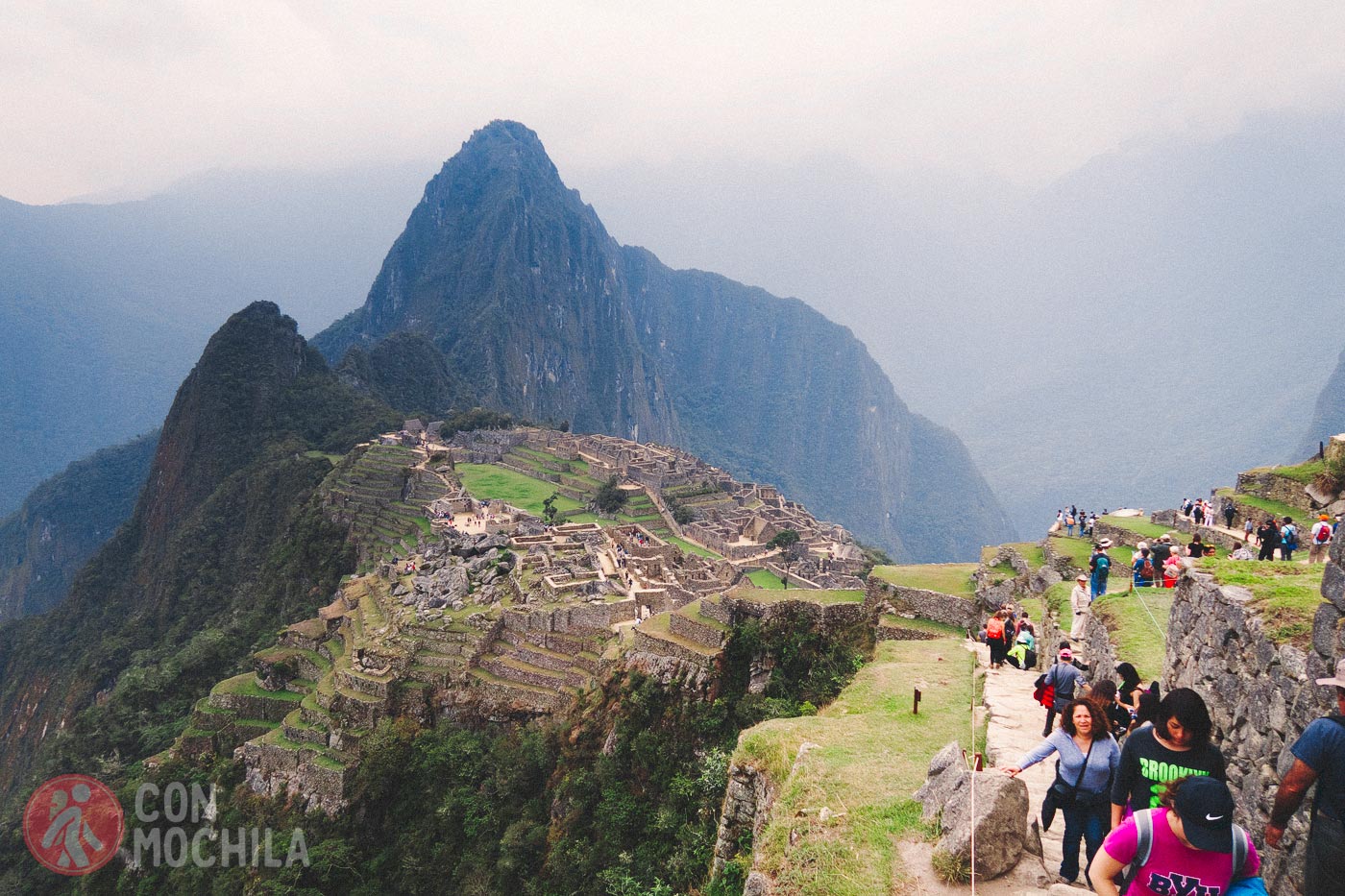
And about the new Lima- it is much safer and more prepared for tourists and travellers. Before, most people stayed in the Miraflores neighbourhood and only went to restaurants recommended by the guidebooks.
But now, no one is afraid to visit the historic center, Plaza de Armas, and also Plaza San Martín, cross the Rímac River to explore the neighborhood of the same name, Barranco, San Isidro, the promenades, the museums, and the thousands of restaurants, food establishments, and picanterías (typical Peruvian restaurants).
In recent years we have learned that there are other interesting cities in Peru beyond Lima, Arequipa and Cusco. What about Trujillo, Chiclayo, Piura, Ayacucho, Cajamarca and Iquitos?
Why not take a few days off from the usual standard trip to visit some of them? They are truly worth it.
So let’s get to work and plan our next trip to Peru carefully, taking into account the whole range of options that we have before us, to which we can dedicate three weeks or two months, depending on our preferences and possibilities. Without a doubt, we will return satisfied and happy, but with an irresistible desire to go back.
The first thing you should know is that, if you are a British or Irish citizen is that you do not need a Tourist Visa to travel to Peru. Neither do citizens from most North America or Europe, that can stay up to 183 days in the country. This is the updated list of countries that only need a valid passport and at least 6 months before it expires to get a visa on arrival. One less expense…
It goes without saying how important it is to travel to Mexico with a good insurance. We were the first ones to offer the famous 5% discount on IATI Insurance, but you also have it available with Heymondo Travel Insurance.
Follow the links bellow to get a discount on their website:
The best time to visit Peru depends on the regions you plan to explore, as the country has a diverse geography with three main climatic zones: the coast, the Andes, and the Amazon rainforest. Here is a general guide:
Entry into Peru will likely be through Lima International Airport. It is advisable to spend at least two days at the start of the trip in Lima to get a feel for the pace of life in the capital, work up an appetite and say goodbye to being at sea level, because wherever you go next will be at higher altitudes.
Peru is a country of altitudes, almost everything is over 2,000 metres (Machu Picchu) and many destinations are over 3,000 metres (Cusco) and around 4,000 metres (Lake Titicaca), so it is not a bad idea to buy some pills for altitude sickness. You will also be offered coca leaves in different forms (candy, chewing leaves, etc.).
Depending on how each person organizes their trip, there is a plan that is usually quite functional. Leave Lima and head south towards the Nazca Lines, the desert, the Colca Valley and Arequipa, then head east towards Lake Titicaca and further north to Cusco and Machu Picchu.
Most of these journeys will be made on the high-quality buses (there are also VIP services) operated by two very famous companies in Peru. The journey will be really long, but the roads are good and the buses are very comfortable. Obviously, you can also rent a car.
Once in Cusco, which has a good airport, you can venture out to the Amazon by flying to Puerto Maldonado or Iquitos, and then heading north. You have to choose between going up the Andes to Huaraz or down to the Pacific towards Trujillo, Chiclayo, and perhaps the tropical beaches of Mancora.
Once in the north, from Piura you can fly back to Lima or take a bus that will last between 14 and 16 hours.
But it all depends on what you want to see and the time you have available for such a large country with so many different travel options. That is why at the beginning of this guide we provided you with some general ideas that you can read in detail below, grouped by destination. And that’s it, enjoy this wonderful country!
Do you need a connection to work or to give your family peace of mind by staying reachable? Don’t worry—most accommodations offer Wi-Fi. However, if you need to stay connected 24/7, we’ll explain how to get a Peru eSIM with internet access.
Lima is neither pretty nor ugly, but quite the opposite. It is one of the great cities of Latin America, vibrant yet chaotic and overwhelming; gray with its “donkey’s belly” in the sky, but also pretty and colourful if you take the time to stroll through its streets and seafronts.
The colonial historic center is a must-see, as are its more or less modern neighborhoods (Miraflores, Barranco and San Isidro), full of places with really good food that give the capital and the country their identity.
We are talking about restaurants, spicy food restaurants (and food establishments that offer one of the best cuisines in the world: Peruvian cuisine, a hallmark of the country, equal to or even more than Machu Picchu.
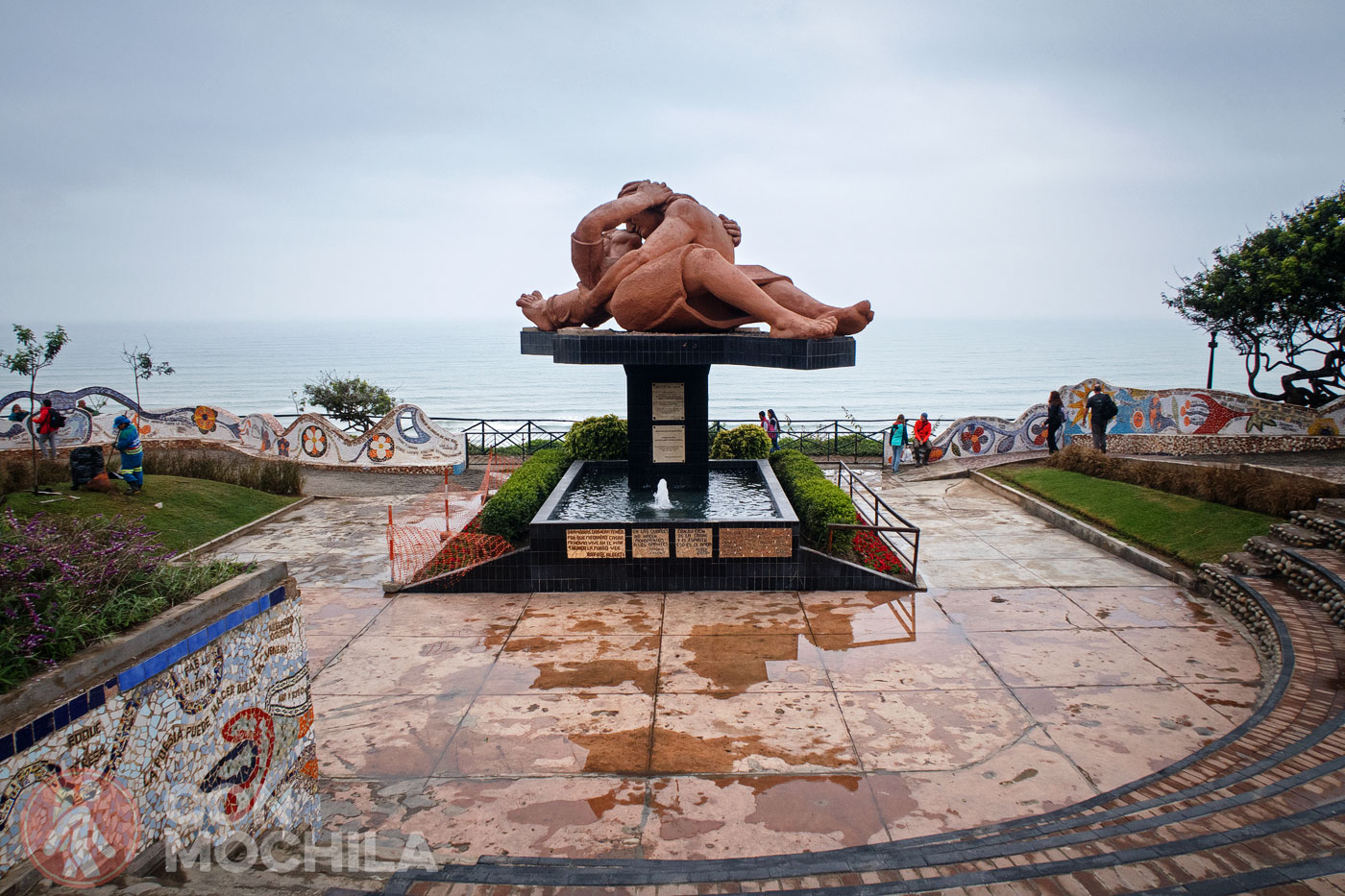
Rocoto relleno, papa a la huancaína, causa limeña, ceviche of whatever you like, anticuchos, ají de gallina, lomo saltado, grilled guinea pig, Amazonian paiche, Nikkei food (Japanese-Peruvian fusion), chifa (Chinese-Peruvian fusion) and its most international cocktail, the pisco sour.
All of these and many more throughout Peru, but especially in what many call the gastronomic capital of Latin America, a city where you can also visit its Plaza de Armas and its cathedral, churches and convents, the Plaza de San Martín, the Rímac neighborhood, the MALI museum, the central market, the boardwalk, the Parque del Amor and the Puente de los Suspiros, the Gold Museum… and sit down for a drink on any of its historic balconies.
Although most people only spend a day or two in Lima at the beginning or end of their trip, I recommend that you give it a chance. It is an impressive city and much more interesting and welcoming than its reputation suggests.
Surrounded by three large volcanoes and the Andes mountain range, Peru’s second largest city awaits us: majestic, colonial and fun, so proud of its beauty, the authenticity of its cuisine, and its southern character.
Arequipa is home to the source of the Amazon River on the high cliffs of the Mismi snow-capped mountain. It offers travellers a historic centre full of small palaces and colonial-era buildings built with sillar, a whitish volcanic stone, which is why it was named the White City.
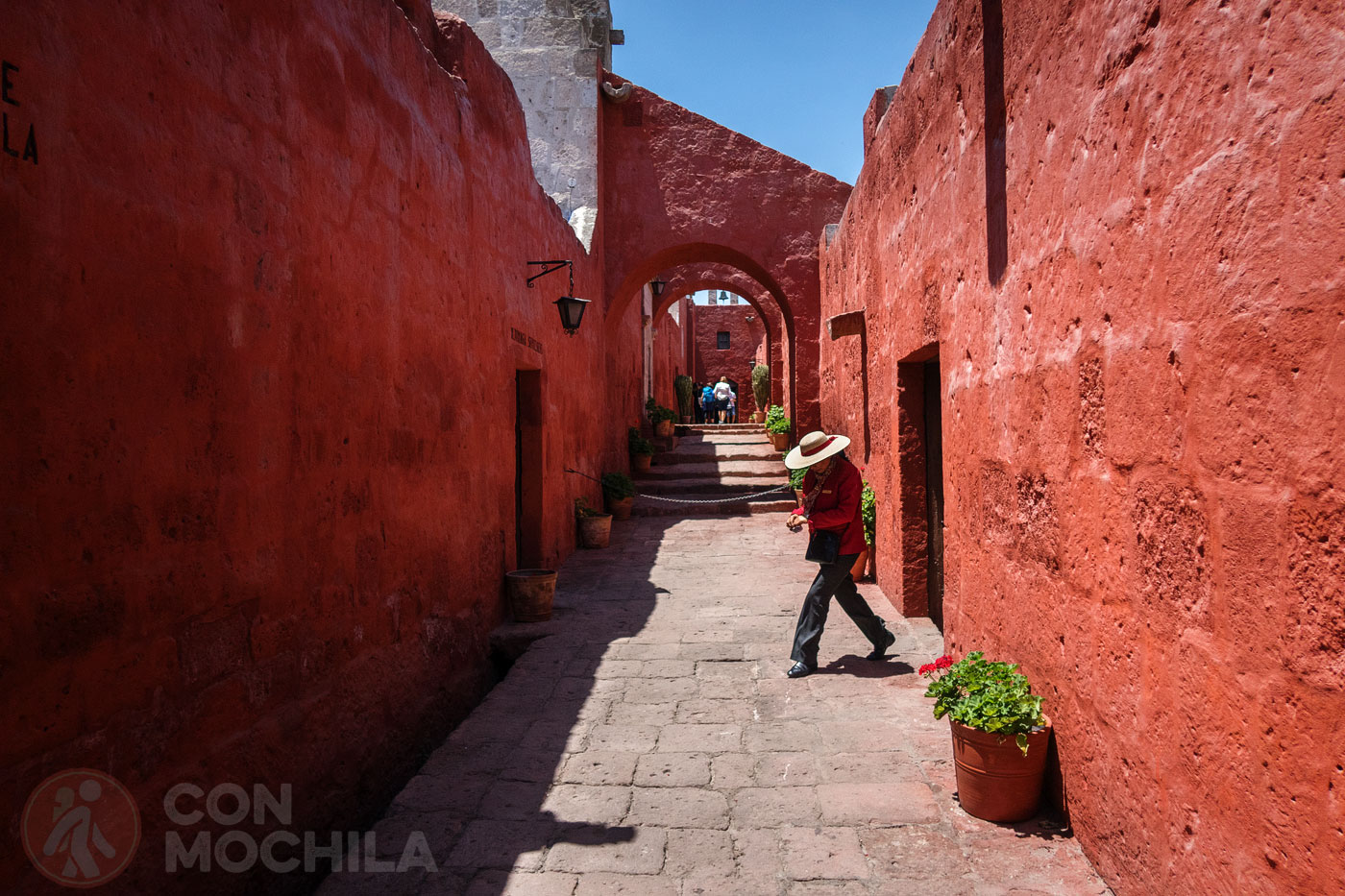
Its Plaza de Armas, the cathedral, the Santa Catalina Monastery, the San Lázaro neighborhood, the viewpoints to enjoy the city and the views of its volcanoes, and of course, its popular picanterías—those places that serve traditional stews and preserve the essence of the best Peruvian gastronomy.
Arequipa is also a strategic base for taking impressive excursions, such as visiting the Colca Canyon to see the flight of its condors, or traveling to Puno to enjoy Lake Titicaca and its islands.
The capital of the Inca Empire and historical capital of Peru is also one of the most authentic colonial cities in Latin America, with the exception of Quito or Cartagena de Indias, among many others.
Perched at 3,400 metres above sea level on the eastern slope of the Andes mountain range, Cusco enjoys a unique blend of Inca heritage with churches, squares and palaces of colonial baroque and neoclassical architecture.
Needless to say, it is a World Heritage Site. We will begin our walk through the Plaza de Armas, visiting the church of the Company of Jesus and the adjacent palace, the San Blas neighborhood, the artistic cradle of the city, and the Pre-Columbian Art Museum.
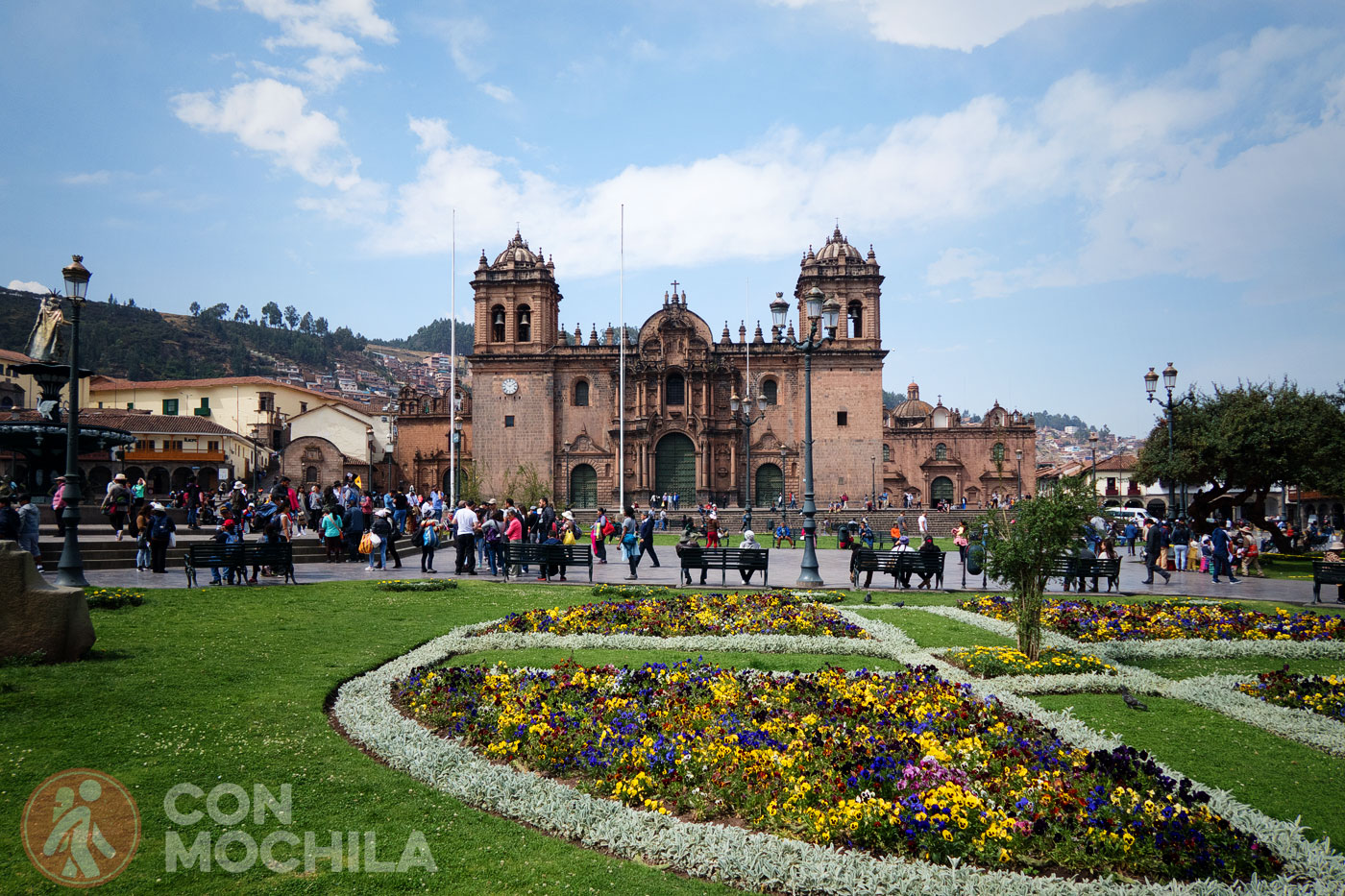
The next day we will visit Coriocancha and the Santo Domingo Convent, the San Pedro Market and the traditional textile centre. And the most important thing in Cusco is to begin the obligatory excursion to the Sacred Valley of the Incas, passing through Pisac and Ollantaytambo, and then heading towards Aguas Calientes, from there climbing to Machu Picchu.
Tours to the Mountain of Seven Colors or the southern Peruvian Amazon of the Manu National Park also depart from Cusco.
It is known as the City of Churches (they say there are 33, the age of Christ) and has one of the most important architectural complexes in Peru, with viceregal temples in Renaissance, Baroque and mestizo styles.
Furthermore, it is known throughout Latin America for the battle of independence from the Spanish that was fought there, which is why there are cities of the same name in countries like Argentina, Bolivia, and Venezuela.
It is worth a day trip if you are heading north towards Lima or Huancayo, leaving Cusco and Machu Picchu behind. Its historic centre is cobbled and has a very pretty colonial style and its Holy Week is one of the most revered in the whole country.
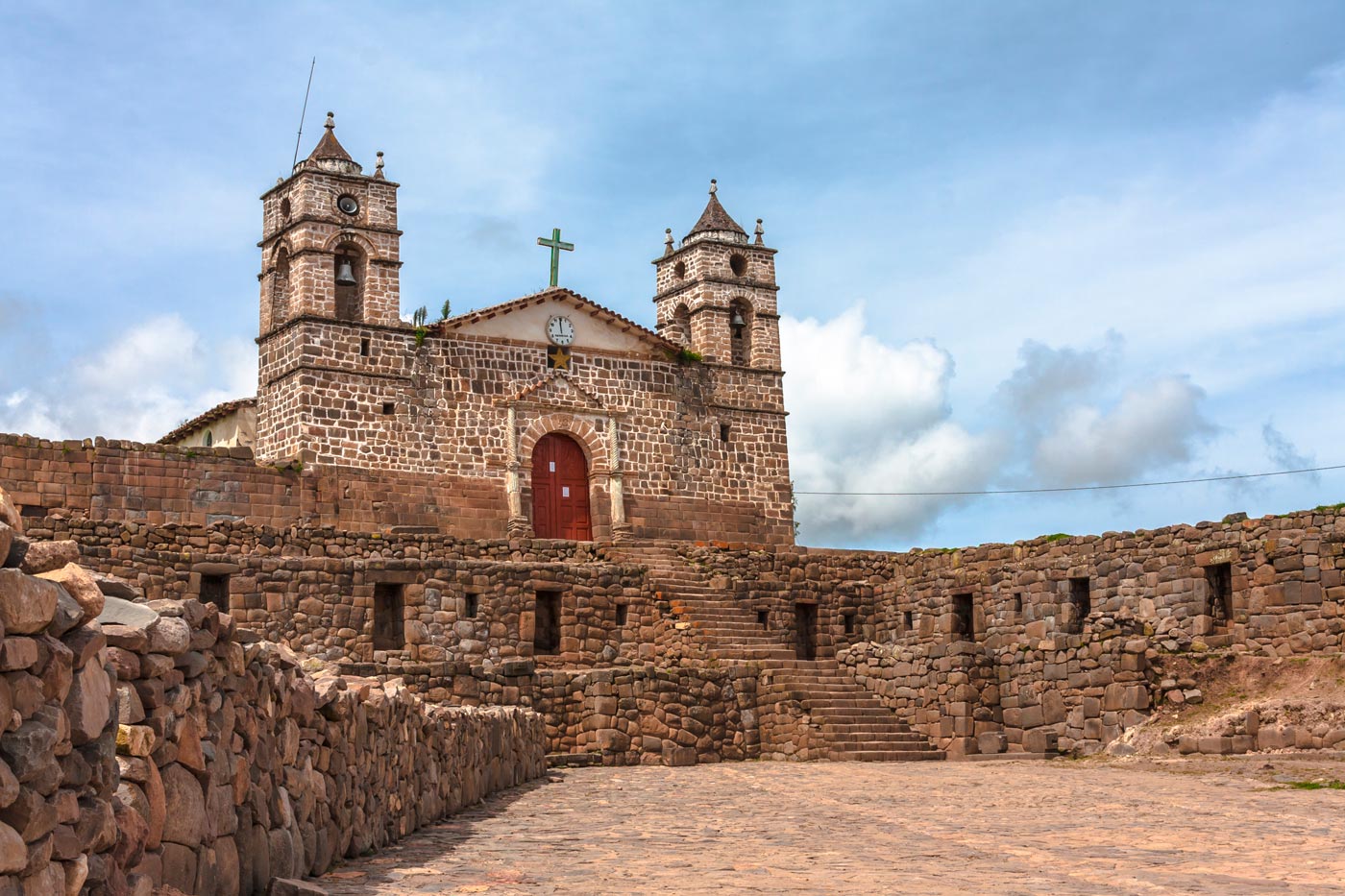
In its immediate surroundings there are several archaeological sites and a little further away it is worth spending half a day visiting the turquoise waters of the Millpu River.
It is worth remembering that although most of Peru’s tourist attractions are in the south and centre of the country, there are very interesting destinations north of Lima that you should not miss.
Trujillo is one of them. The third largest city in the country is known as one of its cultural capitals and its colonial historic center is one of the most beautiful and best preserved. You should walk around Trujillo and its streets and enjoy the relaxed atmosphere of its people.
But the real highlight is just outside the city, in the archaeological zone of Chan Chan, the largest adobe city in America. It was the capital of the ancient Chimú Kingdom.
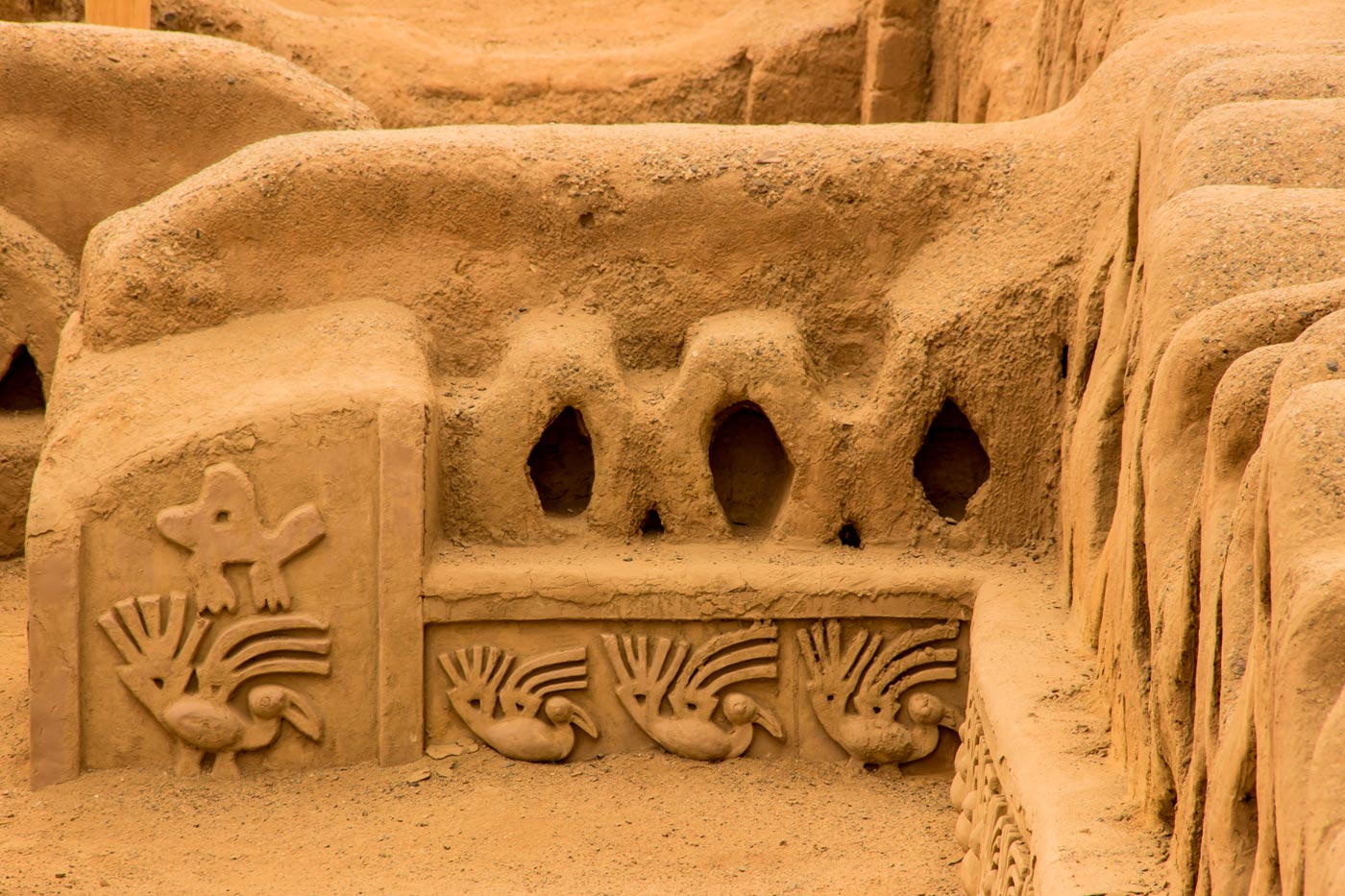
Also not to be missed are the Huacas del Sol and de la Luna, sites of ancient Moche culture sanctuaries, and the resort or beach area of Huanchaco, ideal for surfing and enjoying the sun.
It is the queen of the Northern Sierra of Peru and its valley is surrounded by high mountains. All Peruvians learn from a young age that it was here that the Spanish colonizers captured the last Inca emperor, Atahualpa.
But the city attracts more and more travelers every day, who leave Trujillo to go to Chachapoyas or Chiclayo, and decide to make a one-day stop. Points of interest include its Plaza de Armas, the cathedral, and the even more beautiful Church of San Francisco.
It is also advisable to visit the Baños del Inca to enjoy its hot springs and, above all, take the excursion to the archaeological sanctuary of Cumbemayo, which hides an architectural relic.
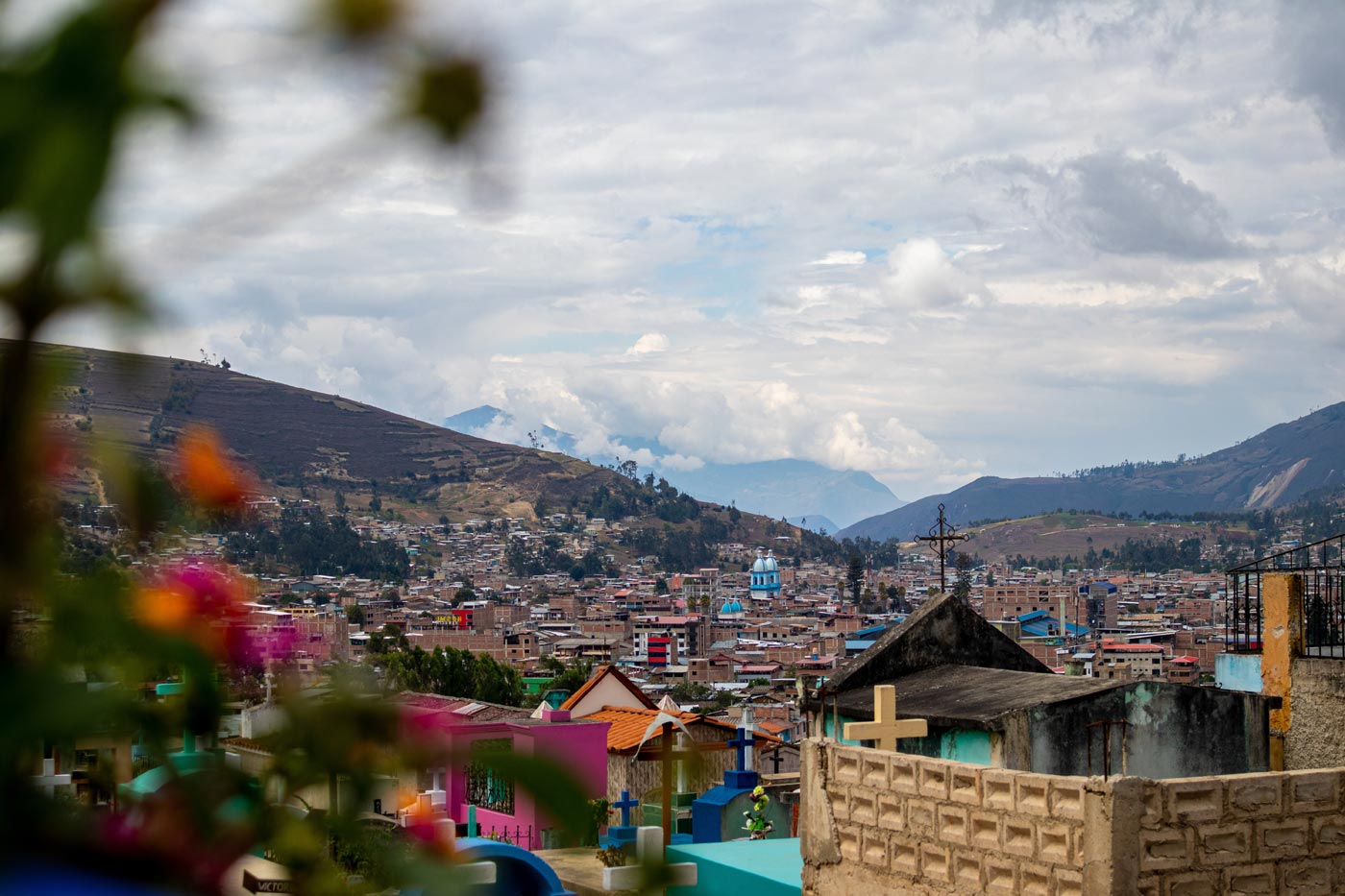
They say that the Cumbemayo aqueduct represents the most important work of hydraulic engineering from the pre-Columbian period discovered so far and that it was built some 3,000 years ago.
The star attraction of Peru is Machu Picchu, there is no doubt about that. No one leaves the country without visiting this wonder of the world and a UNESCO World Heritage Site, an Inca city that, due to its stunning location between the Machu Picchu and Huayna Picchu mountains, leaves no one indifferent.
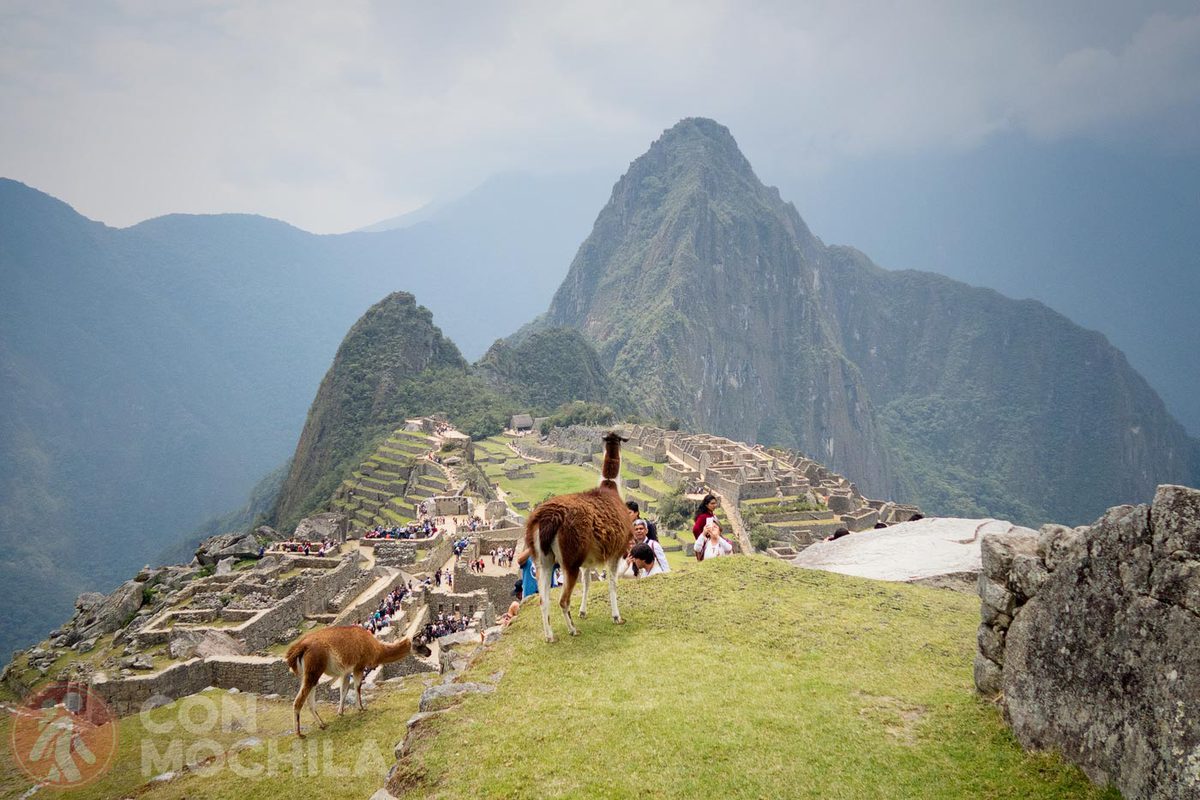
For some time now, access to the ruins has been controlled to improve their conservation. Don’t rest on your laurels and buy your tickets a few months in advance if you don’t want to miss a visit, since it fills up very quickly. In the following article you have all the information about how to buy tickets step by step (coming soon), so it goes without saying 😉
The Sacred Valley is usually visited from Cusco, either on a day trip, or better yet on the way to Aguas Calientes, the town where you depart from to climb to Machu Picchu. The valley is northeast of Cusco and is full of Inca sites.
The first stop will be in Moray to see its impressive amphitheater designed in terraces, which have been used by the Incas for their crops for centuries. We must also stop at the Salineras de Maras, with its more than 2,500 overlapping pools that look like a huge honeycomb on the slopes.
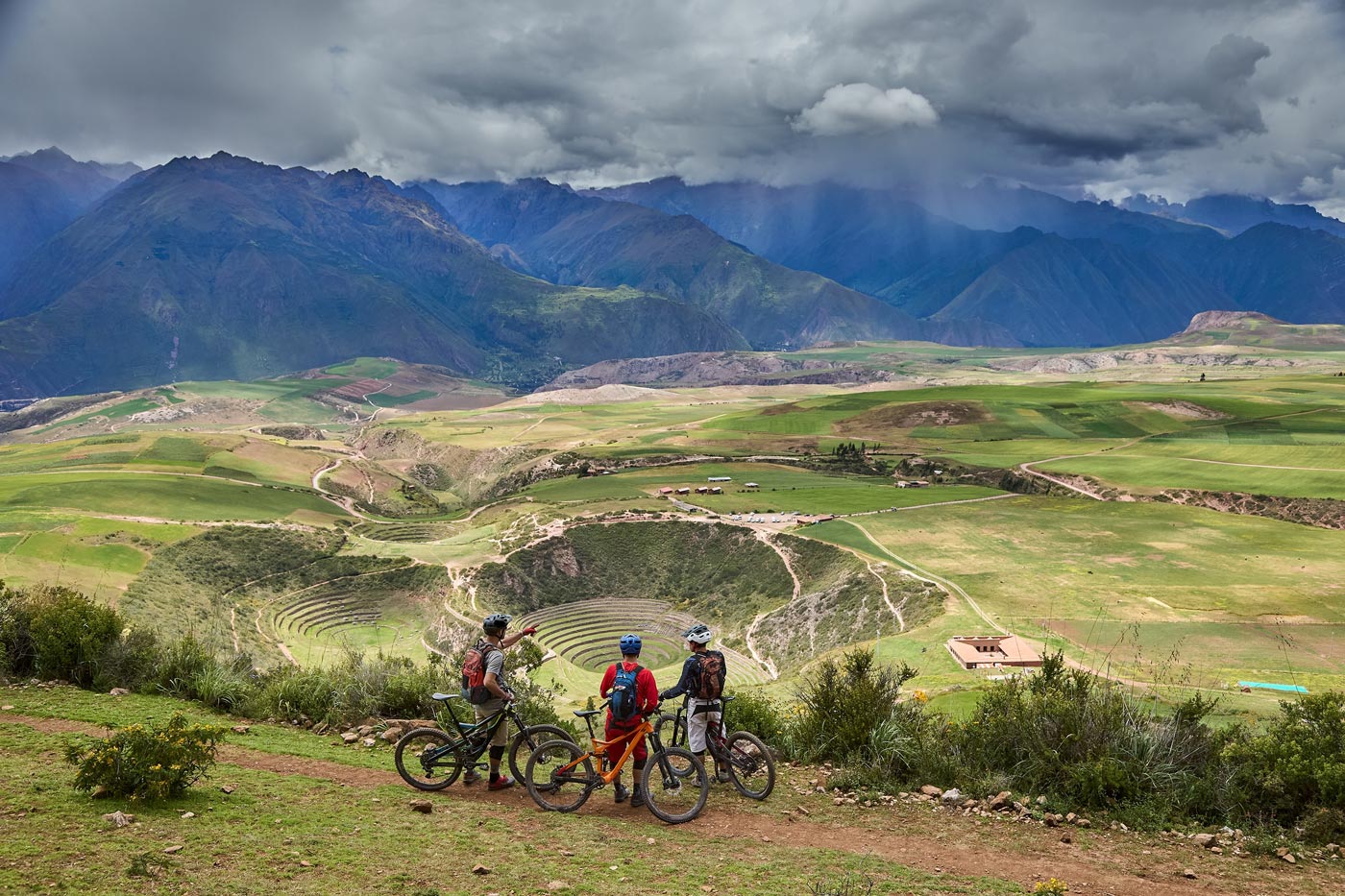
We will also spend a good while in Chinchero before reaching the highlight of the Sacred Valley, the Inca site of Pisac, with its citadel and terraced fields. And at the end of the Valley we will arrive in Ollantaytambo, with its archaeological site, the Citadel and the Temple of the Sun.
And it is here in Ollantaytambo where we will take the train that takes us to Agua Calientes, or we will return to Cusco.
This is the most authentic and challenging way to reach Machu Picchu. In the 15th century, the Incas built a road to connect Cusco with the most visited archaeological site in the world.
Today it has become a route that can be done in three or four days, where you can enjoy a mix of sport and trekking, the mysticism and spirituality of ancient cultures, and a love of mountains, landscapes (cloud forest and alpine tundra) and ruins.
The 43-kilometer route ends at the famous and wonderful Sun Gate of Machu Picchu. It will depend on the traveler which route to choose (Mollepata, classic route…). It is highly recommended to do it in the good months, from May to December.
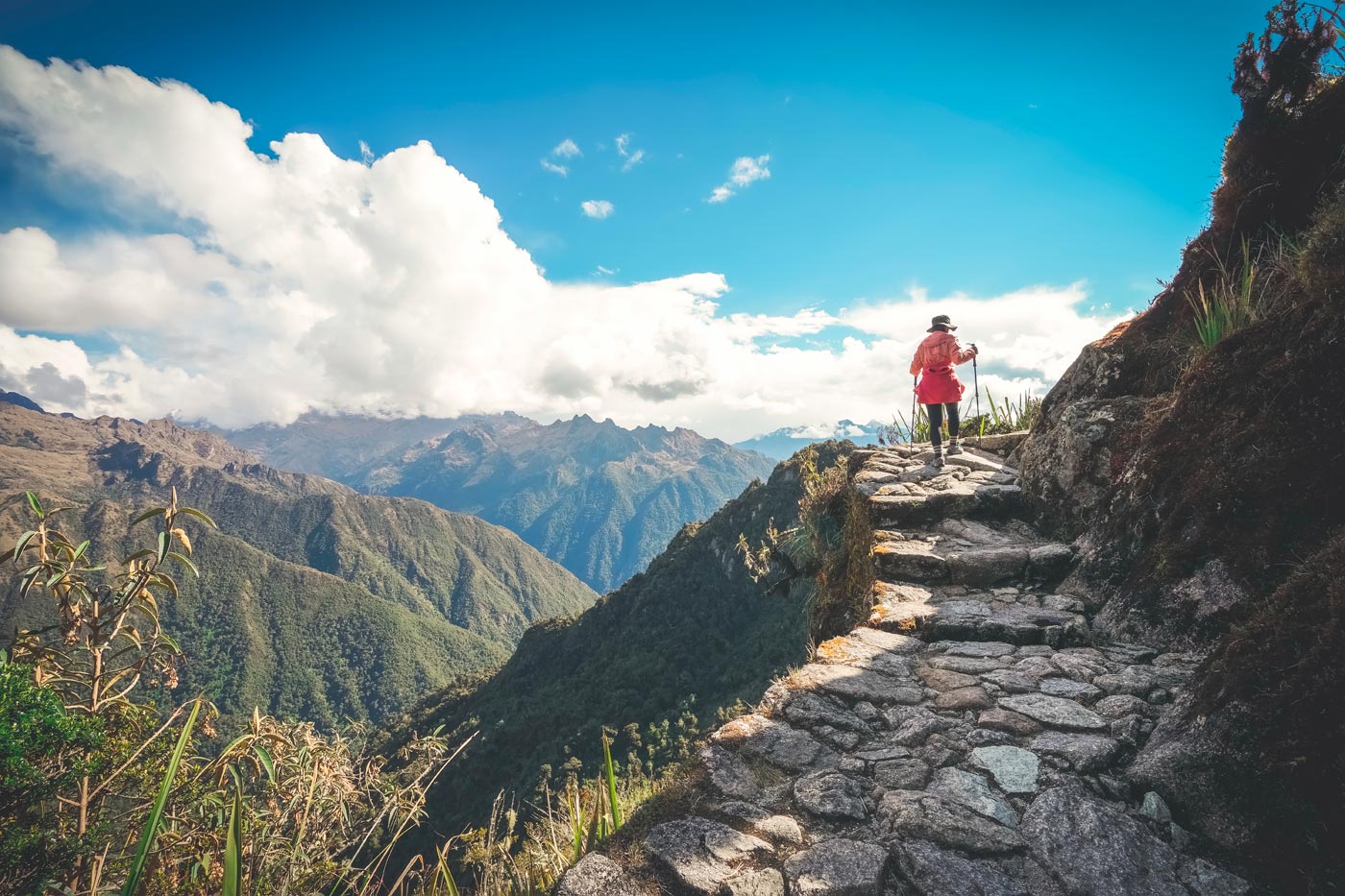
There is so much demand for the trail that the Peruvian government has imposed restrictions on the daily entry of hikers, who must also have made reservations in advance. Like the entrance to Machu Picchu, it is advisable to make reservations well in advance.
Chiclayo is located north of Trujillo and its main attraction lies in the important archaeological sites left by the Moche, Chimu and Lambayeque cultures. It is the fifth largest city in Peru and is well worth a good walk through the center, but the main reason we have come this far is to see one of the most beautiful museums in the country.
We are talking about the Museum of Royal Tombs, also called the Museum of the Lord of Sipán, where you can find an impressive collection of 2,000 gold and silver objects, as well as copper and ceramics, which were found in the Huaca Rajada, the most important funerary complex of the Moche.
The most emblematic tomb of this great cemetery is that of the Lord of Sipán, which is estimated to be more than 2,000 years old, which contrasts with the architectural modernity of the building that houses the museum.
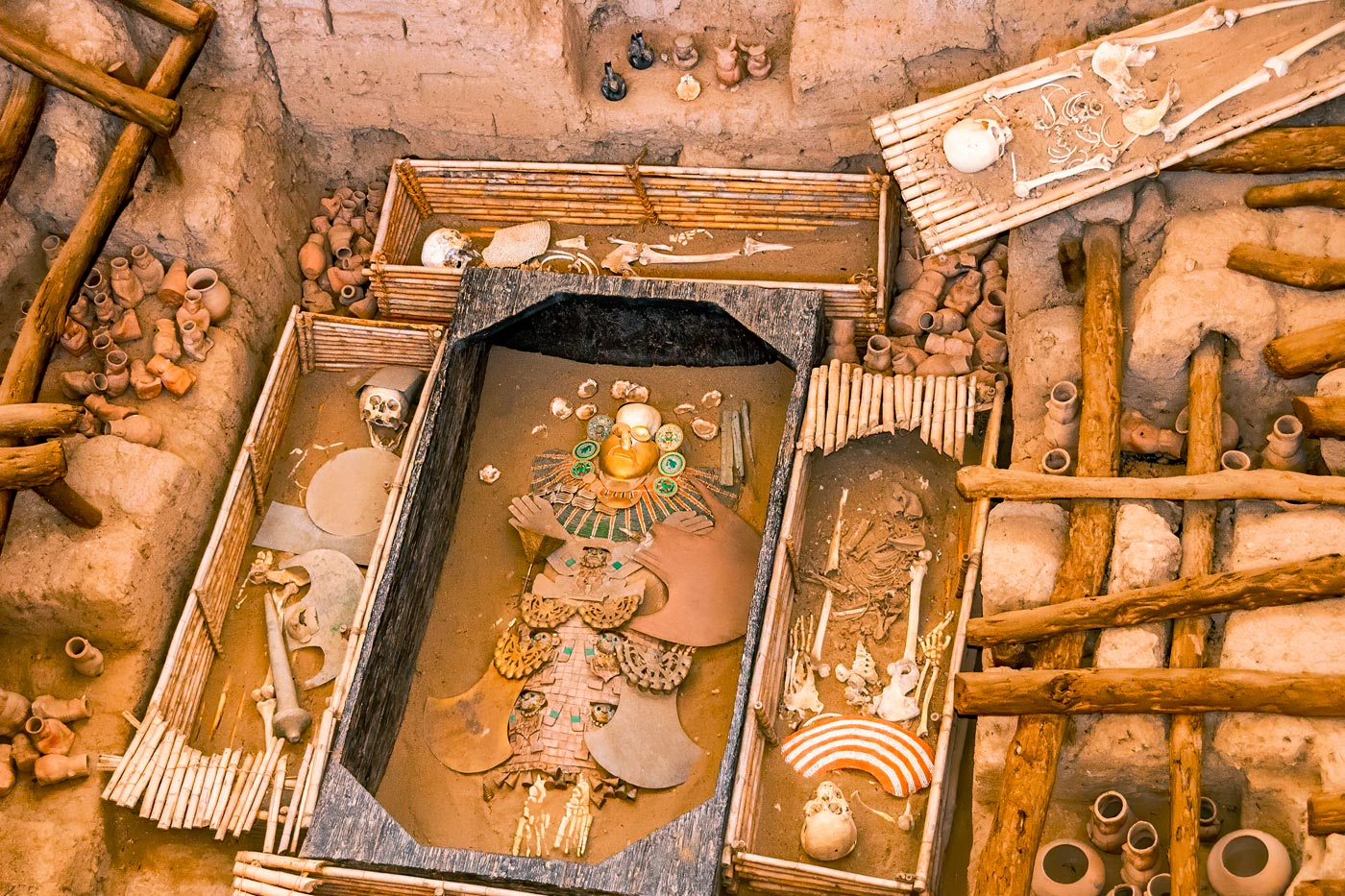
Furthermore, from Chiclayo you can visit the Pyramids of Túcume and the National Museum of Sicán, as well as head to the Pacific, specifically to the welcoming town of Puerto Eten or the more beach-like town of Pimentel.
Chachapoyas is located in a privileged environment between the eastern slope of the Andes Mountains and the Amazon rainforest, on a lush plain that feeds the Marañón River, one of the two major tributaries of the Amazon River.
The Chachapoyas were an Amazonian people who were eventually conquered by the Inca Empire. As early as the 11th century, they represented one of the main cultures of the Andes and built a fortress that is still the largest pre-Inca fortified city in South America and is now the main tourist attraction in the area.
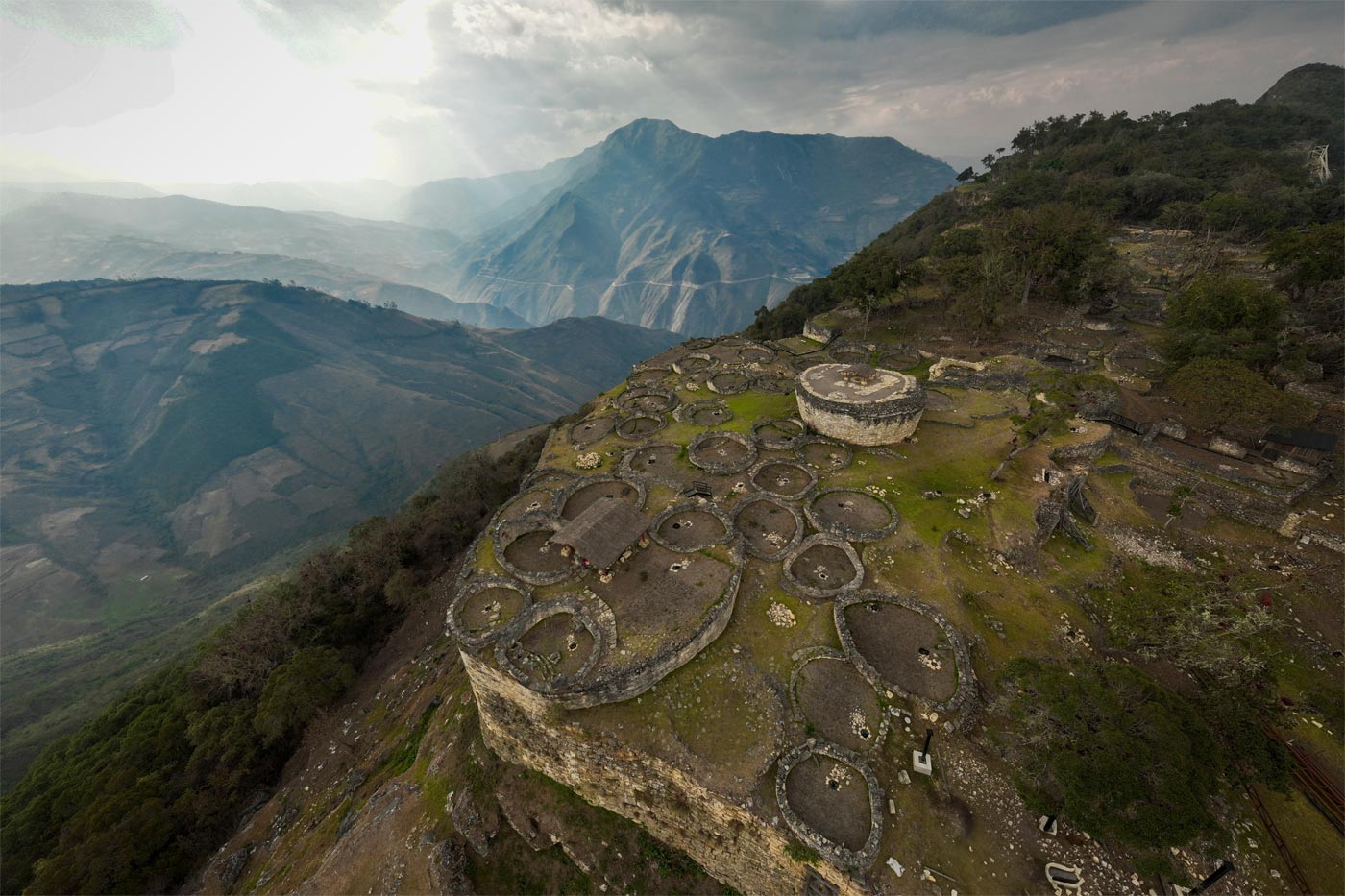
The warriors of the clouds, which is the meaning of Chachapoyas, built this large walled population center with complex and advanced architecture, an administrative and religious center with more than 450 buildings at an altitude of 3,000 meters.
Caral is a sacred city so ancient that experts believe it is more than 5,000 years old, making it the oldest civilization in America. It was contemporary with the cultures of Egypt, India and China, but while the latter interacted and influenced each other, the Caral people did everything in complete isolation.
In recent years it has been placed on the radar of international tourism, and can be reached by taking the charismatic Pan-American Highway north from Lima.
Once there, you should spend at least half a day enjoying the ruins of its monumental buildings, such as the Great Pyramid, the Temple of the Amphitheater and the Circular Plazas.
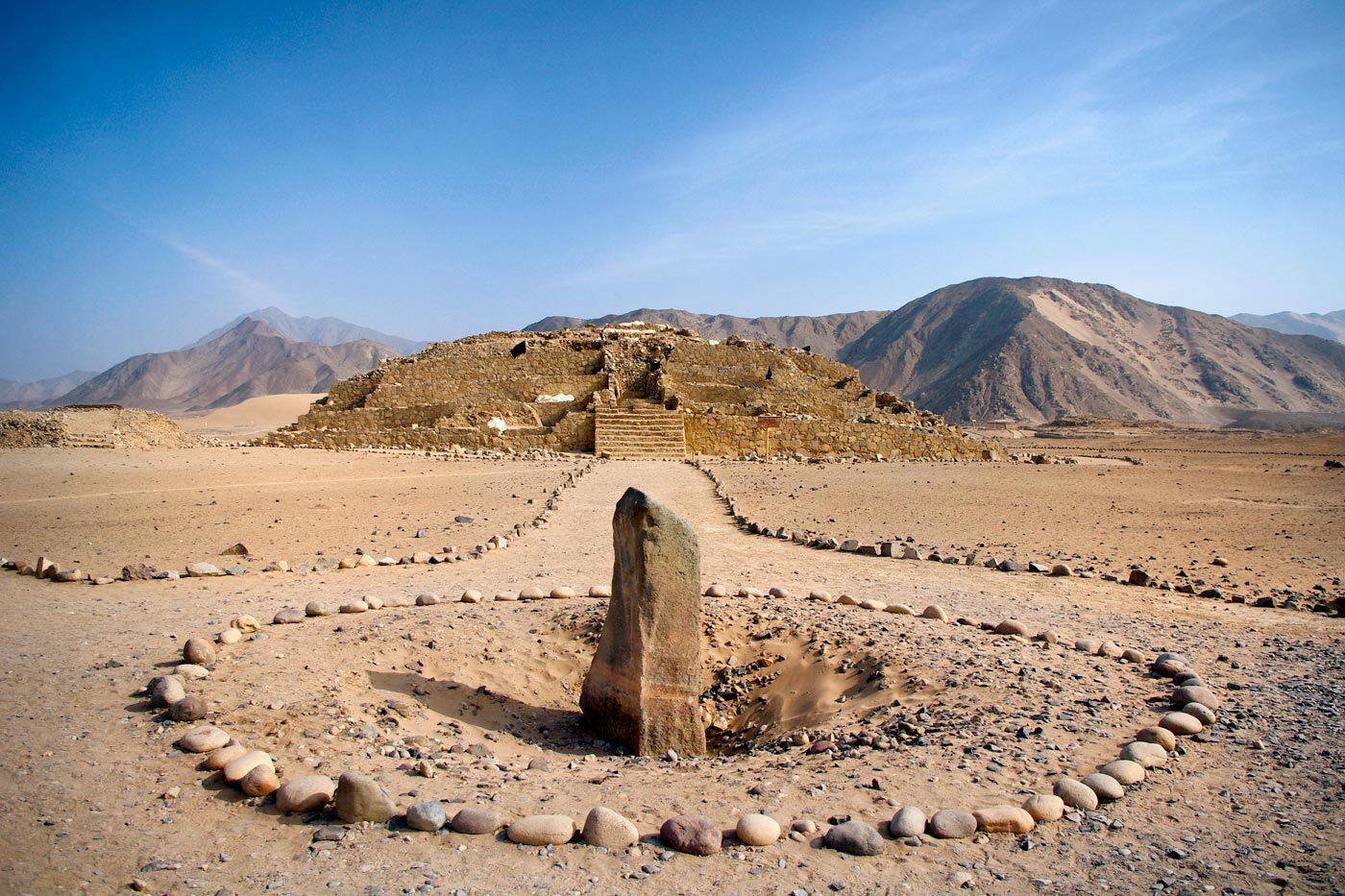
The best thing to do is to spend a night in Barrancas, the capital of the province, and enjoy its tranquility and northern cuisine.
About three hours south of Lima we find those lunar and desert landscapes that lead to the red sand beaches of the South Pacific. We are talking about the Paracas National Reserve and, opposite it, the Ballestas Islands, two destinations that you will love for their uniqueness and for being a kind of gateway to the great southern desert of Peru.
In the small town of Paracas you can book a boat tour to Las Ballestas to enjoy the diversity of its marine fauna, with its sea lions, penguins, thousands of cormorants and other birds in the area.
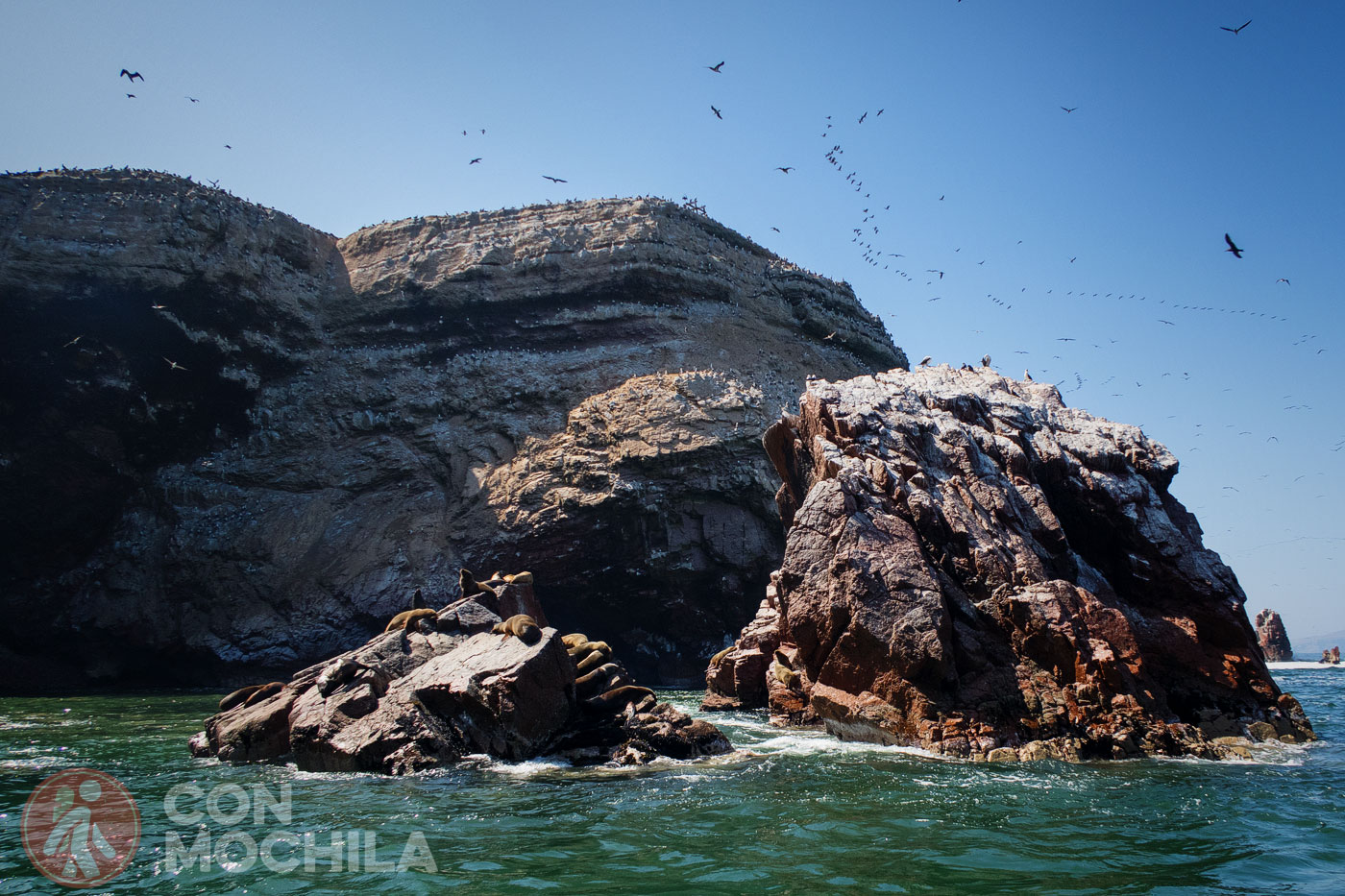
Another more adrenaline-filled option is to rent a buggy or quad and, either with a guide in a group or on your own, take a thrilling ride through the dunes. Afterward, you can finish off with a tour through Pisco and some of its wineries to taste the Peruvian liquor of the same name, which has sparked so many disputes with Chile.
Just an hour by bus from Paracas, you will arrive in Ica, the heart of the Peruvian desert, surrounded by golden dunes and even an oasis, Huacachina. The best thing to do is take a buggy tour to get a thrill and reach the oasis. You can walk around it, and if possible, spend the night there to enjoy the starry skies without any light pollution.
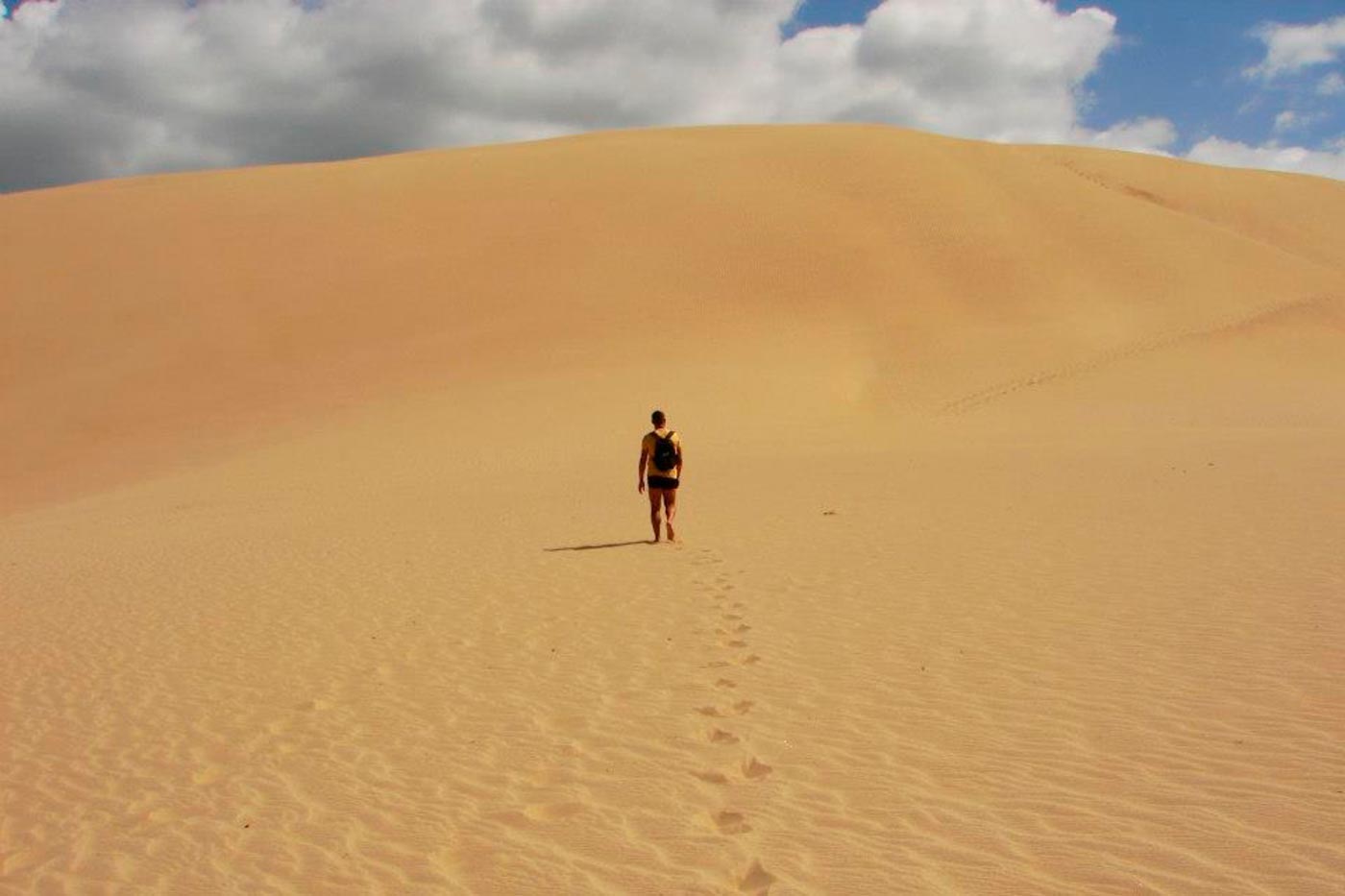
I stayed in a cheap hostel with a pool and lots of charm. The next day, if you dare, we recommend going sandboarding, which is surfing on the slope of the dunes in those dizzying descents but without fear of falling because that is what the sand is for, to cushion our falls and make us laugh. It is also not a bad option to take a tour of wineries to try the wines and piscos from the Ica area.
Are you afraid of flying? Then get ready for an unforgettable flight! And not only by marveling at the mysterious geoglyphs that are the Nazca Lines, but also by finding out what you are made of… Few people get off those little planes, the same colour as the one they got on without feeling their stomach turn over three times.
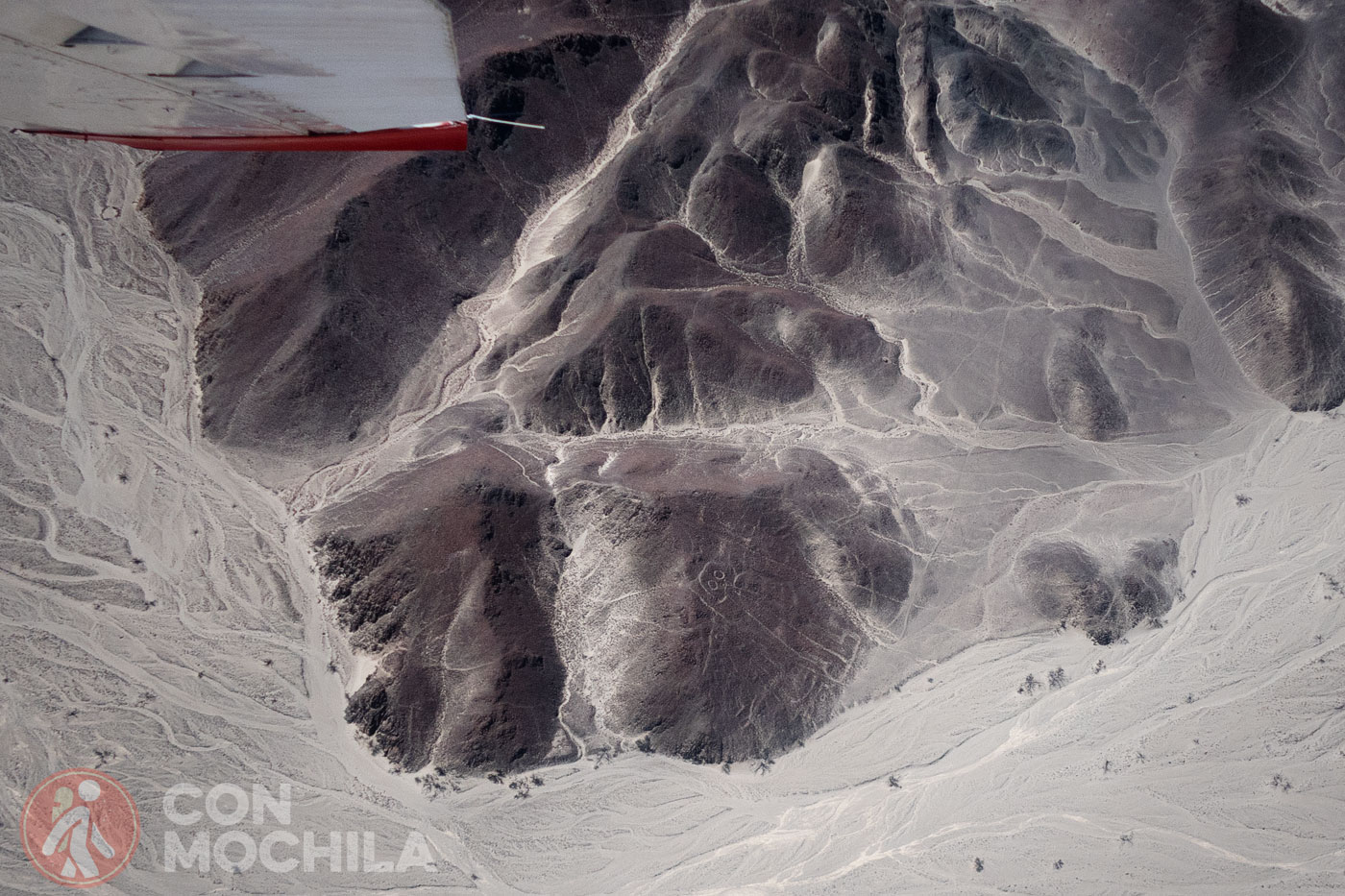
Phew! We flew with the company Alas Peruanas, and how can we forget that little flight and that funny pilot? “And on the right, Valencian friends: the hummingbird!” Open your eyes wide and discover the most outstanding figures of this World Heritage Site of the Pampas de Jumana that still remain a mystery.
The Colca Canyon or Valley is one of the deepest in the world, even though it is more than 4,000 metres above sea level. It is easy to reach this area from Arequipa, although you have to be careful of altitude sickness, which is called soroche in Peru.
Even if you are short on time, you should dedicate at least two days to enjoying everything this excursion has to offer, which begins with the journey itself, filled on both sides with vicuñas, llamas and alpacas grazing freely.
Upon entering the canyon, you must look up at the sky to see the condors flying and lording over you, to reach Chivay, the main town and base of operations for our visit.
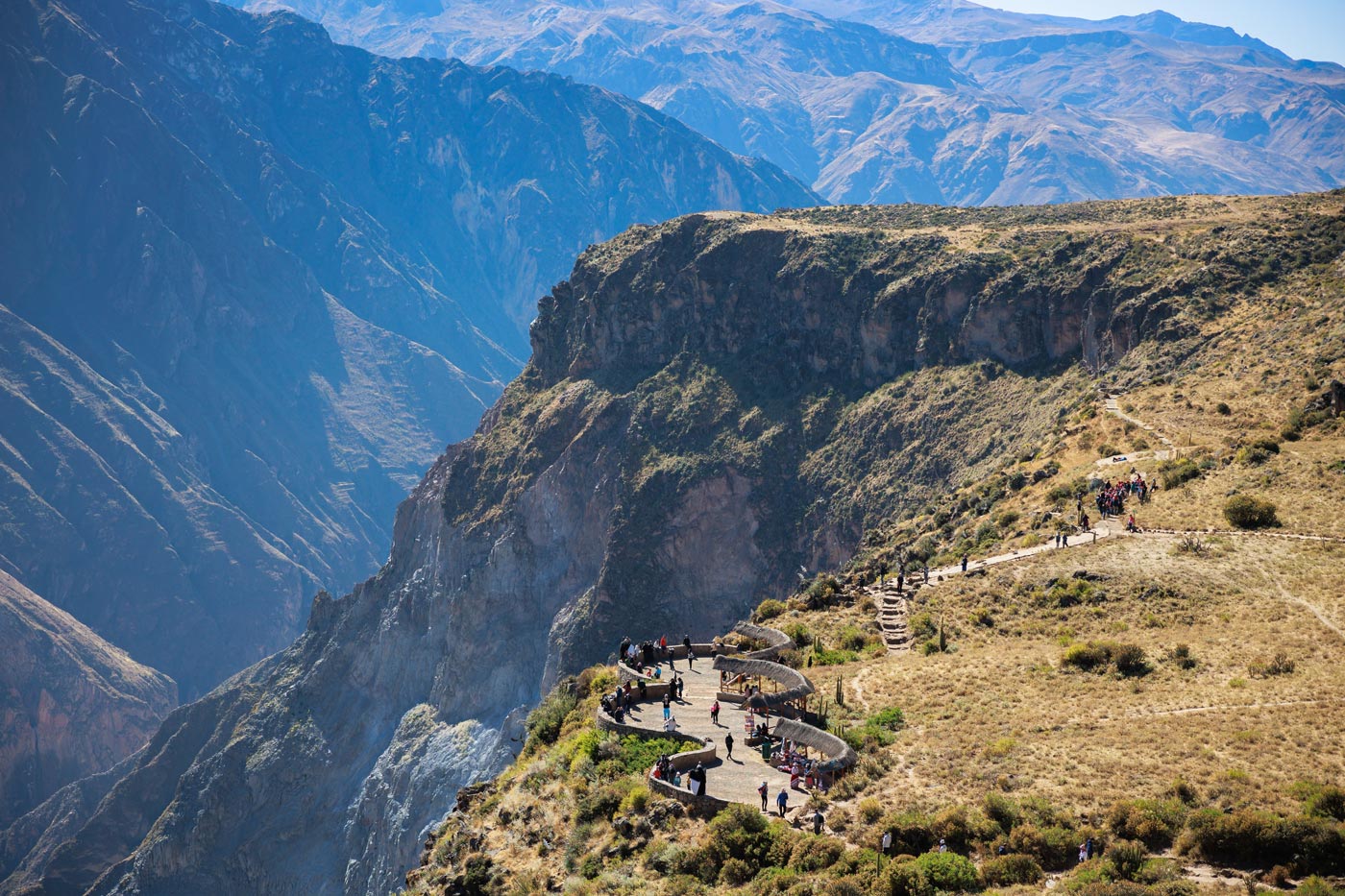
You can also enjoy the volcanic hot springs, the small pre-Columbian and colonial towns and villages, the impressive Patapampa volcano viewpoint (located at 5,000 above sea level), the various treks in the area,and the unique terraced or stepped agricultural plantations designed to overcome the slope of the farmland.
Dear travelers, welcome to the Altiplano, that geological wonder that created three vast and sisterly plains at nearly 4,000 meters above sea level: the Atacama Desert in Chile, the saltwater desert that solidified into the Salar de Uyuni in Bolivia, and the immense reservoir of freshwater that formed Lake Titicaca.
On the Peruvian side of the highest lake in the world (3,800 meters) you will base yourself in Puno, a fully equipped city that is neither pretty nor ugly but has good restaurants and all the services that a traveler needs.
From Puno you can visit some of the artificial islands built by the Uros centuries ago using totora, a type of reed that keeps them afloat. They are very touristy, it is true, but it is worth stopping to learn a little about the Aymara culture of its inhabitants.
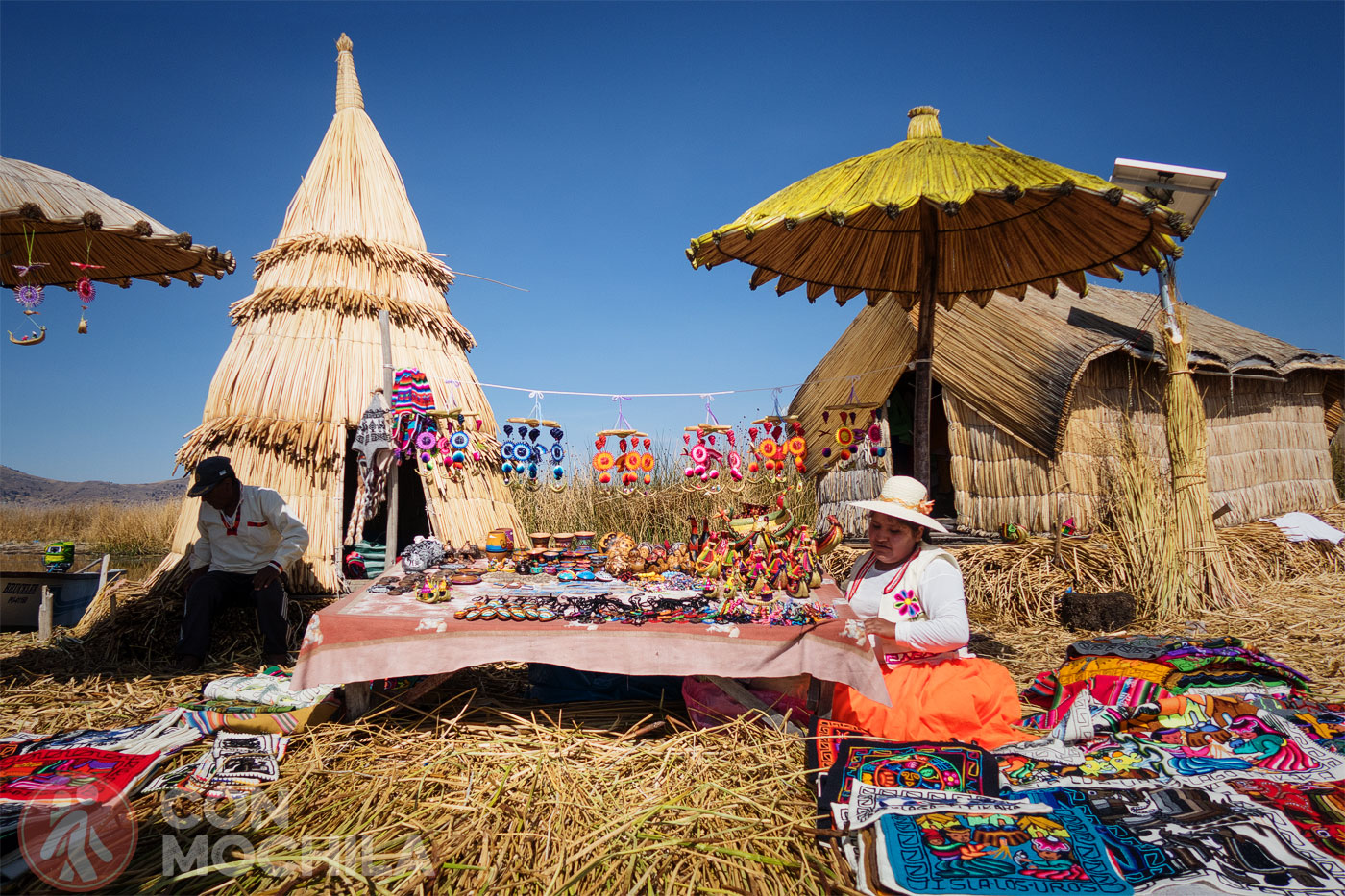
It is also advisable to visit some of the other islands, especially Amantani or Taquile, and why not stay overnight in the home of a local family.
We enter the southern Amazon of Peru, the Manu National Park, a biodiverse area that has remained largely untouched by tourism. The most usual route is to enter through Puerto Maldonado, the capital, in a propeller plane like I did.
Once you arrive, you’ll need to visit various agencies and offices to decide which guide to choose, what excursions to take, and which lodge to stay at, all located in the heart of the jungle. If you are lucky, you can see tapirs, jaguars (almost impossible), anacondas, spiders, macaws, piranhas, crocodiles and many other animals.
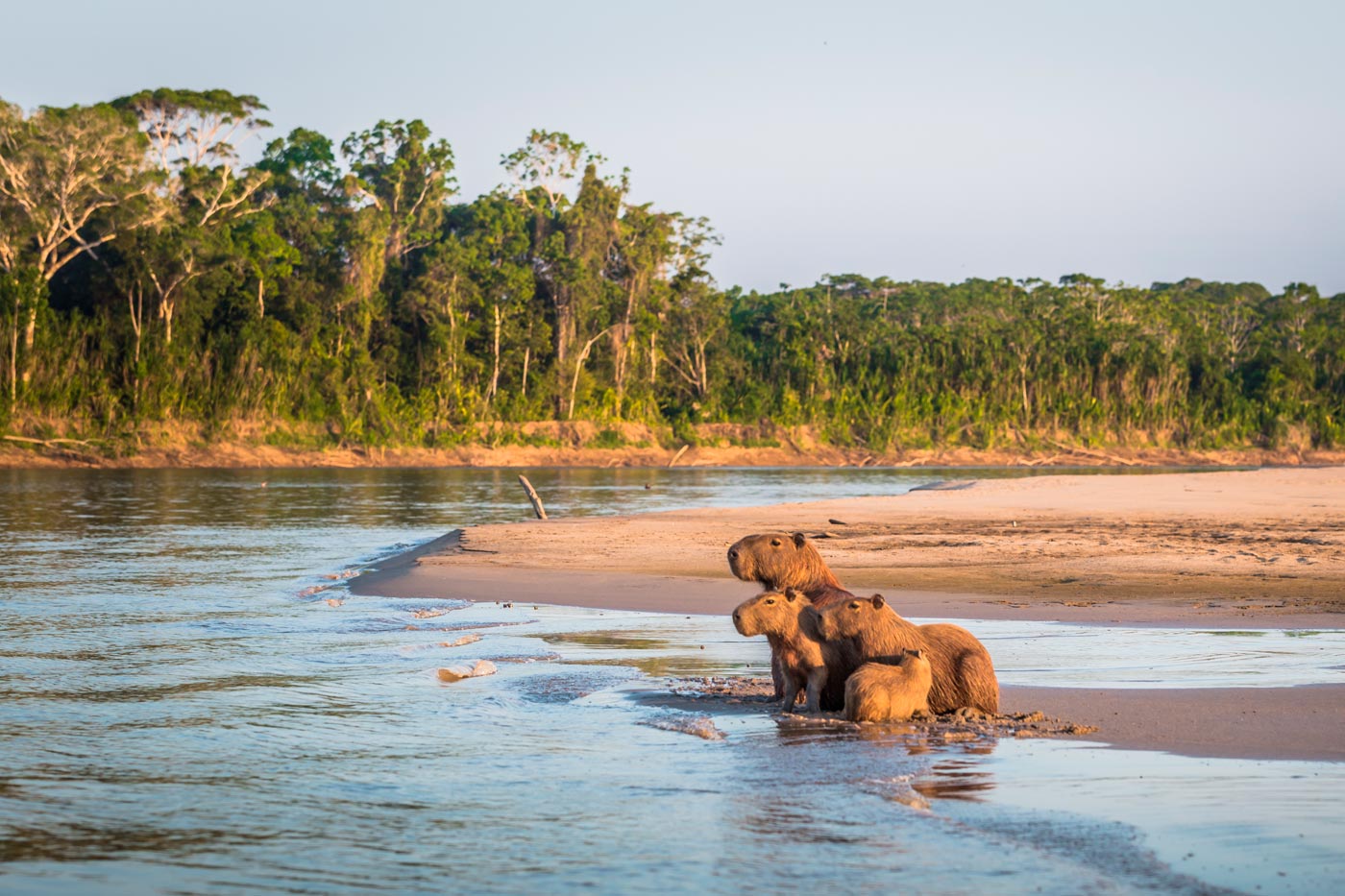
You can even eat sweet ants that climb the trees of the jungle, as its inhabitants have done for centuries. You are in the Madre de Dios basin, a tributary of the Amazon River, and very close to the Tambopata National Reserve.
If you have time and a desire for adventure, you just have to head north along the Madre de Dios to Pucallpa, the capital of the Ucayali department. Here begins the navigable part of the Amazon, the longest and most voluminous river in the world.
It is quite an experience to board a freighter (there are no commercial passenger ferries) to begin the voyage along the 6,000 kilometres of the Amazon River that stretch all the way to its mouth in Brazil.
The Ucayali and Marañón rivers join to form the main course of the Amazon River, which flows unimpeded towards Iquitos, the capital of Loreto, the most Amazonian department of Peru. Here you can hire cruises or boats to navigate the Amazon River upriver until you reach the point of the three borders, which are shared in less than a square mile by Peru, Colombia and Brazil.
Iquitos is a vibrant and chaotic city, where one can enjoy Amazonian cuisine, eat the giant pirarucu or paiche fish, and crocodile meat, which is not only hunted in the area but also farmed for consumption in some nearby farms.
The best place to eat Amazonian food and enjoy the hustle and bustle of Iquitos is the Belén neighborhood and of course its market.
Iquitos is also ideal for booking an excursion to explore the jungle for a few days. There are tours for all budgets and comforts, but it is advisable to spend at least two or three nights and three days in the middle of the jungle.
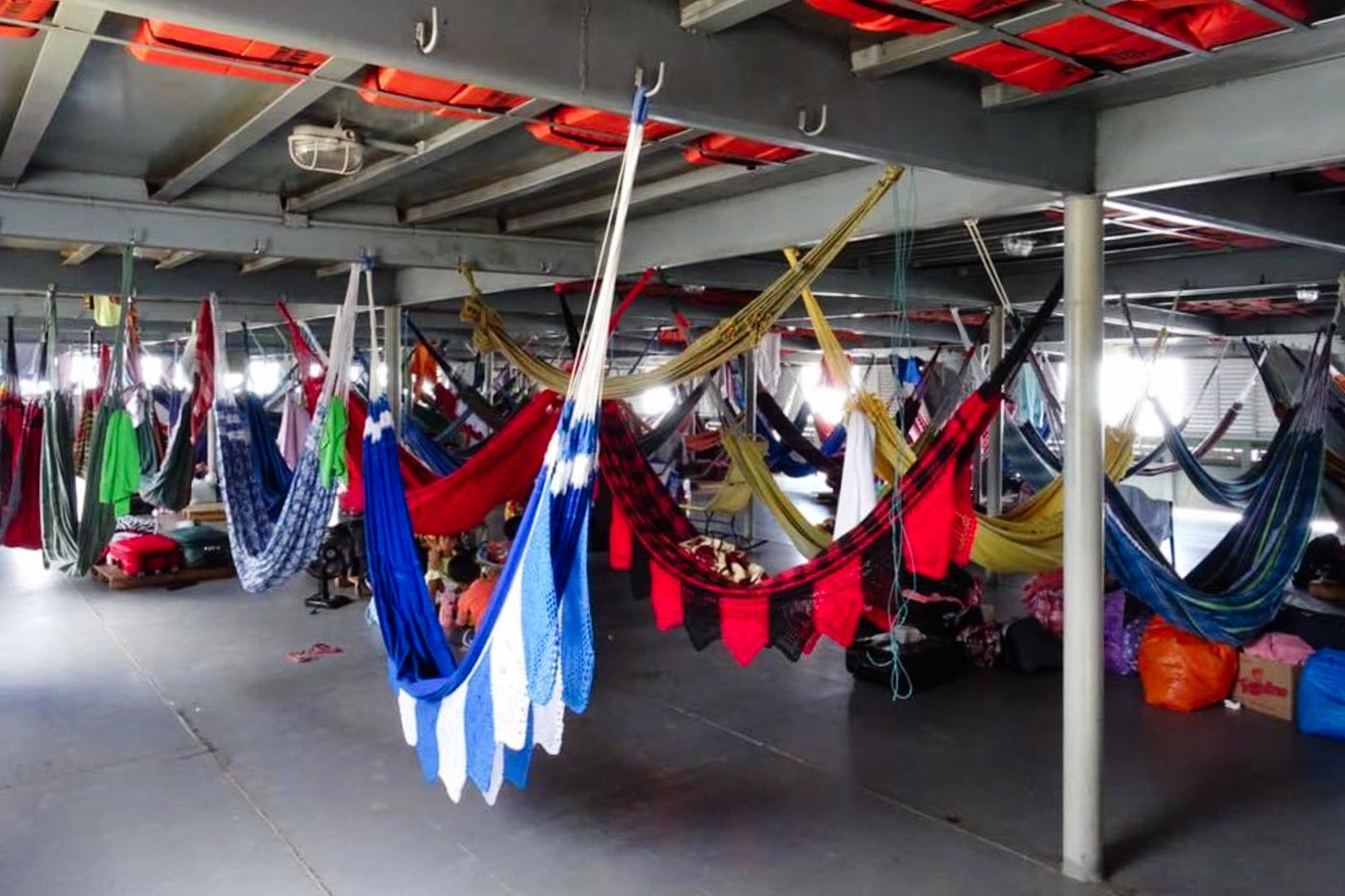
I spent a week there and was absolutely amazed. I spent two days learning survival skills with a guide, where I learned to fish, hunt, and gather what the jungle offers, sleeping in a hammock, getting wet as usual, and navigating narrow rivers in a wooden canoe. And the guide told me that we saw a six-meter anaconda coiled up taking a nap..
Iquitos offers an unforgettable experience that can be booked with varying degrees of luck in the city, all at very reasonable prices.
Another of Peru’s hidden gems that didn’t become popular as a tourist destination until just over ten years ago. Climbing up to 5,100 metres to enjoy the so-called Rainbow Mountain is quite a spectacle, but be aware that it takes a bit of trekking to get to the top. Let’s not forget that we are in the Andes Mountains.
Whether you hire a tour from Cusco, the nearest major city, or on your own, you will have to get to Cusipata and from there to Pampachiri, where you will begin the hike starting at 4,600 meters above sea level.
If you are reasonably fit and have previously acclimatized to the altitude coming from Cusco, it will not be difficult to reach the viewpoint where you can enjoy this geological beauty: hills with layers of different colors due to the mix of mineral compositions.
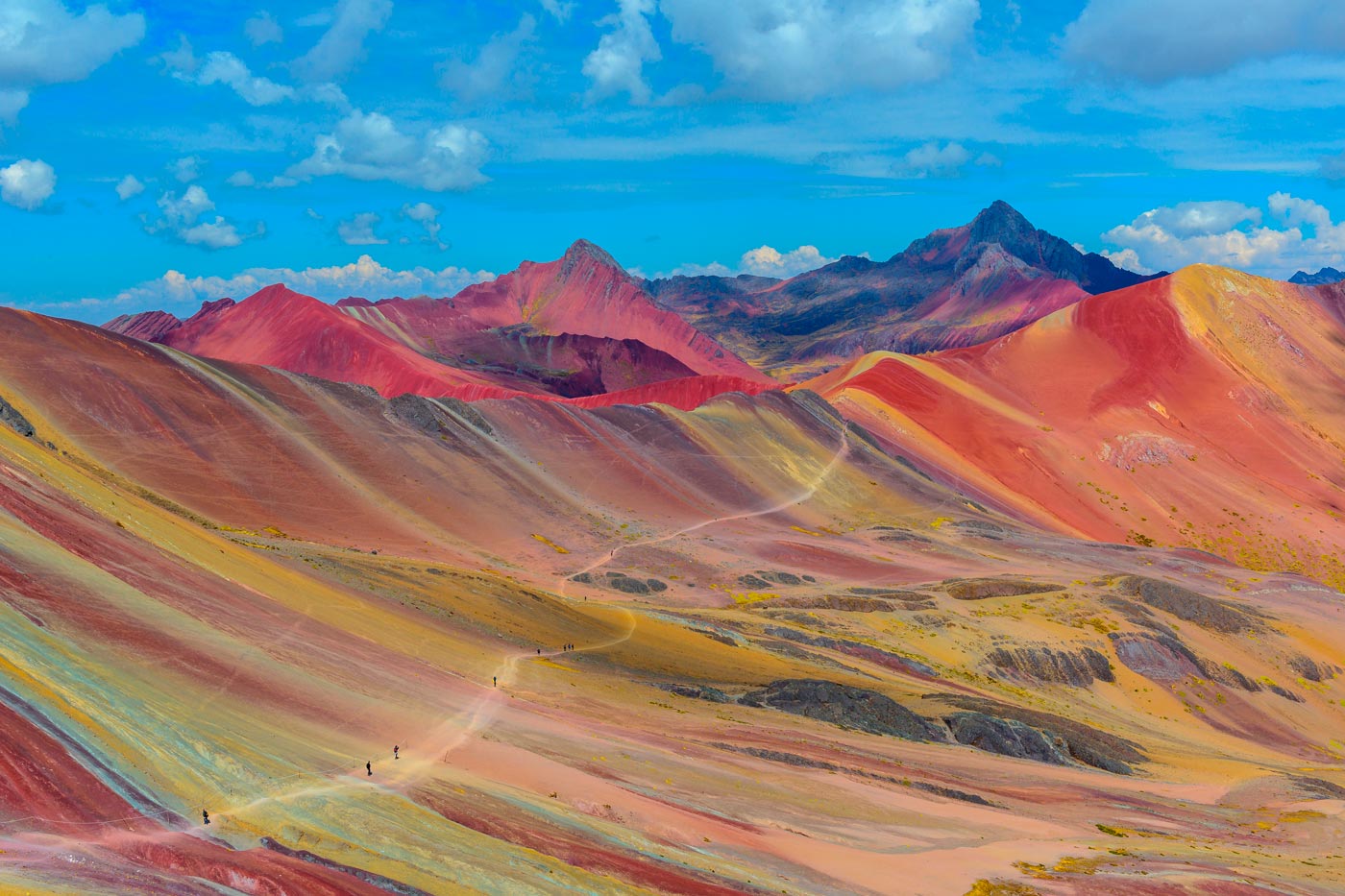
Red clay, quartz, iron, magnesium, sulfur, each component has left its mark in the form of color over millions of years, and luck, erosion and time have been responsible for placing the colors in aligned bands in the form of a flag or rainbow. It is spectacularly beautiful.
There are many options for mountaineering and hiking in a country that is traversed from south to north by the Andean mountain range, but perhaps the best and most accessible of all of them is Huaraz and the Huascaran National Park, a biosphere reserve.
You will arrive at the city of Huaraz, which will be your base of operations, where you could dedicate at least half a day to walk around its Plaza de Armas, its central market and the viewpoints. And you will set off to first visit the archaeological complex of Chavín de Huantar, a UNESCO World Heritage Site.
And for the following days, it is time to choose between hiking or high-altitude mountaineering. The Querococha lagoons, Laguna 69, Churup or the Quebrada de Llanganuco are extremely beautiful, but you have to be acclimatized to overcome altitudes of 4,000 meters.
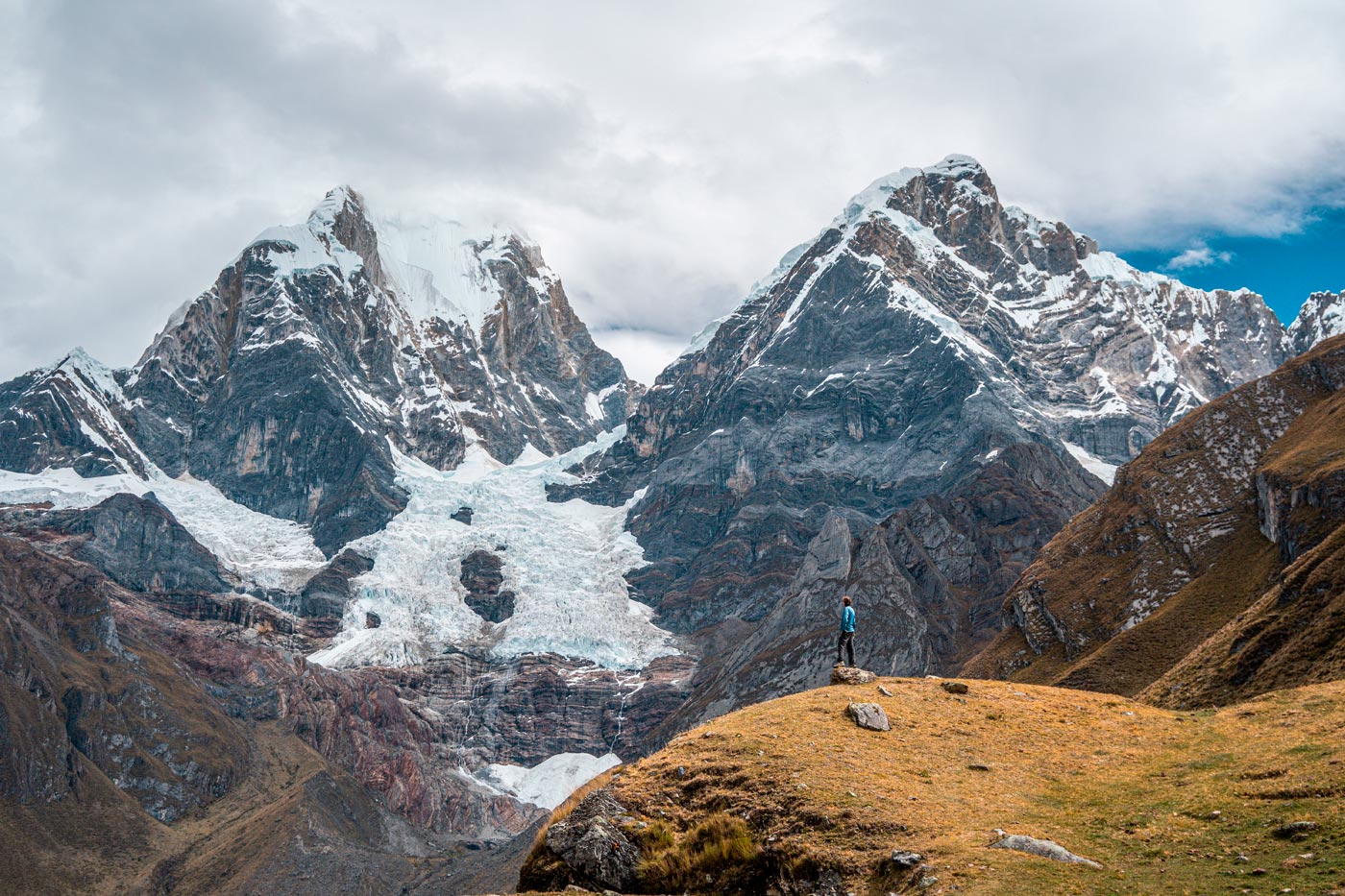
You should also go into Huascarán, since several of these excursions are within the park itself, which charges an entrance fee. The park is home to 20 snow-capped peaks, all of which exceed 6,000 meters in height, so we won’t be lacking in high-altitude mountaineering. You’ll also have the chance to hike to some of the glaciers, such as Pastoruri.
Both Peru and Chile are extremely beautiful countries, bathed by the South Pacific, but their beaches are not exactly among the best in America. That is why Mancora, in the north of the Andean country and very close to Ecuador, offers something special.
Beautiful beaches, excellent seafood caught by the locals, water sports, resorts of all types and prices, very cheap hostels and good nightlife, a destination for families and also for young people who love sports and partying.
In Mancora you can practice surfing and kite surfing, snorkelling, do some diving, go fishing on special excursions, go whale watching, and visit the fishing village of Cabo Blanco, made popular by Ernest Hemingway and famous actors such as Gregory Peck, John Wayne, Doris Day and Marylin Monroe. You can imagine the amount of tourism there.
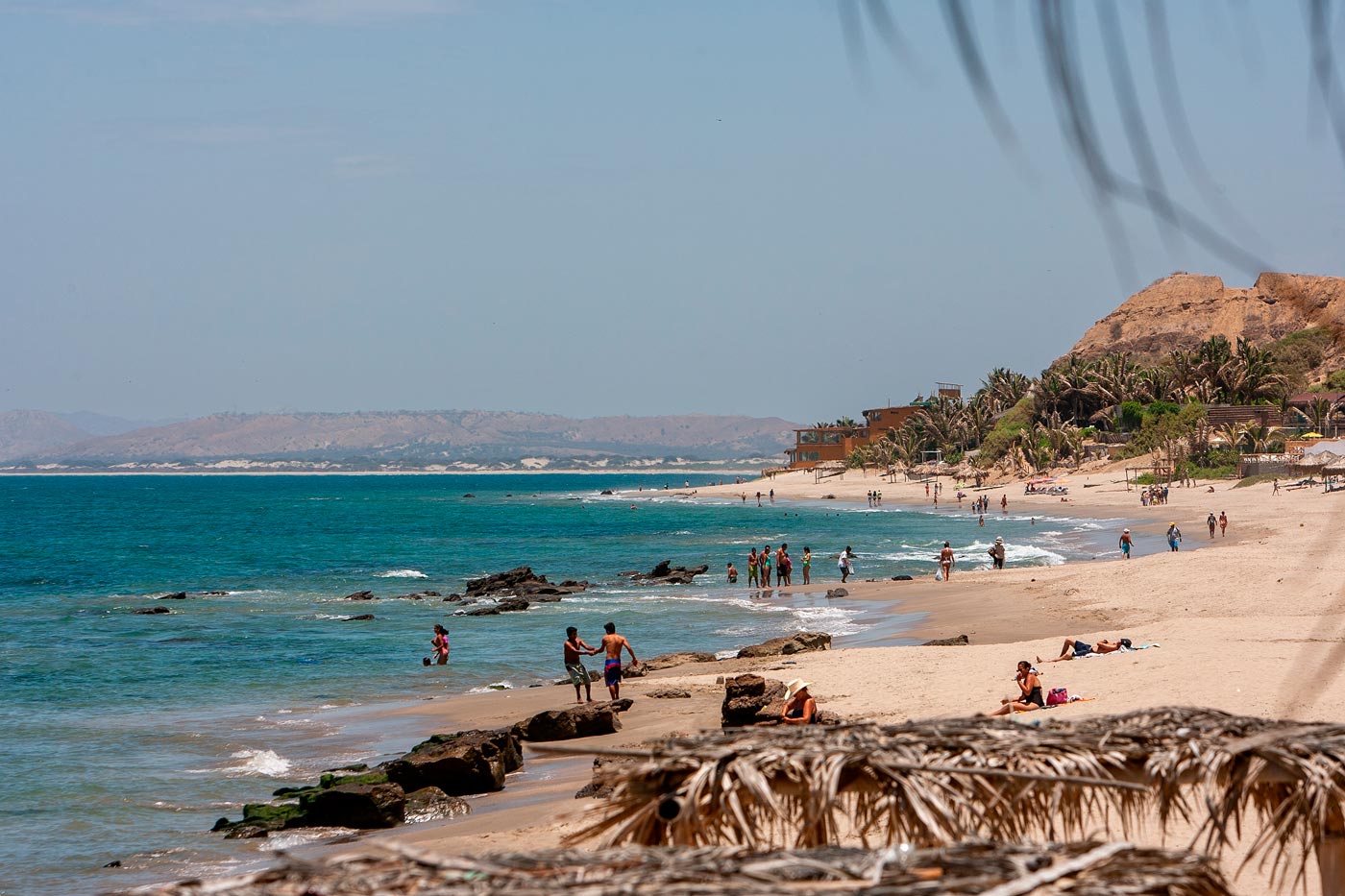
It depends on the person what kind of experience they are looking for in Mancora, knowing that in the north, in Punta Sal, the atmosphere is more local and authentic, while in the south, in Vichayito, everything is more exclusive.
What I can recommend, because I did it, is to end your trip through Peru in this tropical north. After two, three, or four weeks of intense traveling across the country, the beach time, relaxation, and a bit of warmth as a final gift is the best option.
I thought it would be as difficult to find a place where you can enjoy food as in Southeast Asia or India, but Peru discovered a whole world of gastronomy to me.
Sara, Mariajo and I stuffed ourselves with food… And even though ceviche and ají de gallina are two signature dishes, there is no problem finding others without meat or fish, and vegetarians won’t have to suffer on the trip.
There are many recipes with quinoa, potatoes or choclo (corn). Papa a la huancaína and the vegetarian version of causa are easy to find on menus, and of course in cities like Lima and Arequipa there are several vegetarian restaurants.
I admit that our trip was really a flashpacker, as the moderns would say, and we didn’t skimp too much on accommodation, but booking three-bed rooms always worked out quite cheap. In case you’re interested, here are the names of the hotels and hostels where we stayed.
I still think about that dinner at a place in Malaysia whose name I don’t want to remember when Claudia, Jairo and Nando gave me a ton of advice on how to organize my trip to Peru, and in half an hour I had the itinerary done.
One of the best pieces of advice I got was from Claudia: to use Cruz del Sur to travel around the country. This bus company covers most of the routes a traveler needs, has a wide schedule so you can choose the best time (it makes many night trips), is comfortable (with individual television screens), and is safe (the drivers take turns every few hours and the speed at which they are driving is always displayed on a screen). In addition, you can buy tickets in advance from their website: Cruz del Sur.
Haz click en la imagen y te llevará a una nueva ventana de google maps con todos lo lugares de interés de Hong Kong.